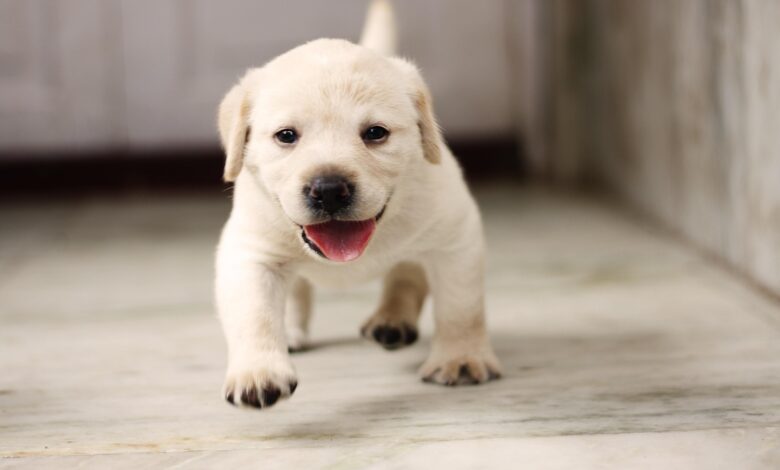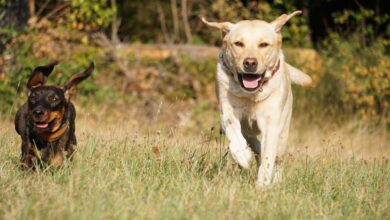How to Train a Labrador Puppy: Mastering Basic Commands
Patience, positivity and consistency is key

BY BERNADETTE ROBERTS
Labrador Retrievers are among the most popular dog breeds in the world, known for their friendly nature, intelligence, and eagerness to please. These qualities make them ideal candidates for training, but it’s essential to start early to lay the groundwork for good behaviour. Training a Labrador puppy involves patience, consistency, and positive reinforcement. Here’s a comprehensive guide to teaching your Labrador basic commands.
Preparing for Training
Before diving into specific commands, it’s important to set the stage for success:
Create a Training Environment: Choose a quiet area with minimal distractions to help your puppy focus. As they progress, you can introduce more challenging environments.
Gather Supplies:
Treats: Use small, soft treats that your puppy loves.
A clicker (optional): This can be a useful tool for marking correct behaviours.
A leash and collar or harness for certain commands.
Set Realistic Expectations: Puppies have short attention spans. Keep training sessions to 5-10 minutes and aim for multiple short sessions throughout the day.
Understand Positive Reinforcement: Reward your puppy immediately after they perform a desired behaviour. This could be a treat, praise, or a quick play session.
Teaching Basic Commands
Sit:
The “sit” command is one of the easiest to teach and forms the foundation for other commands.
Steps:
- Hold a treat close to your puppy’s nose.
- Slowly move your hand upward, causing their head to follow the treat and their bottom to lower.
- Once they sit, say “Sit” and give them the treat immediately.
- Practice this several times a day. Over time, your puppy will learn to associate the word “sit” with the action.
Tips:
- Use a calm but firm tone.
- If your puppy jumps instead of sitting, lower the treat closer to their nose.
Stay:
“Stay” helps your puppy learn impulse control and is useful in many situations.
Steps:
- Start with your puppy in the sitting position.
- Hold your palm out in front of them and say, “Stay.”
- Take one step back. If they stay in place, reward them with a treat and praise.
- Gradually increase the distance and duration.
Tips:
- Always return to your puppy before giving the treat. This reinforces the idea that staying in place is the desired behaviour.
- Be patient. Puppies may take time to understand this command fully.
Come
Teaching your puppy to come when called is crucial for their safety.
Steps:
- Attach a long leash to your puppy.
- Crouch down to their level and enthusiastically say, “Come!” while gently pulling the leash.
- When they reach you, reward them with a treat and lots of praise.
- Practice in a fenced area or indoors before trying it in open spaces.
Tips:
- Never use the “come” command for punishment. It should always be associated with positive experiences.
- Use a cheerful tone to encourage your puppy.
Down (Lie Down)
“Down” is a valuable command that promotes calm behaviour.
Steps:
- Start with your puppy in the sitting position.
- Hold a treat in your hand and move it toward the ground, guiding them into a lying position.
- Once they lie down, say “Down” and reward them.
- Repeat this process daily.
Tips:
- Avoid forcing your puppy into position, as this can create resistance.
- Be consistent with your verbal cue and hand signal.
Leave It
This command helps prevent your puppy from picking up harmful or unwanted items.
Steps:
- Hold a treat in each hand. Show your puppy one hand with the treat and say, “Leave it.”
- When they stop trying to get the treat, reward them with the treat from your other hand.
- Practice by placing a treat on the floor and covering it with your hand. Say, “Leave it” and reward them when they stop trying to grab it.
Tips:
- Be patient and celebrate small successes.
- Gradually increase the difficulty by leaving the treat uncovered.
General Training Tips
Be Consistent: Use the same words and gestures for each command. Consistency helps your puppy learn faster.
Use High-Value Rewards: Find out what motivates your puppy most. For some, it’s treats; for others, it might be toys or affection.
End on a Positive Note: Finish each session with a success and plenty of praise.
Avoid Overtraining: Puppies can get overwhelmed. Stick to short, focused sessions.
Socialize Your Puppy: Exposure to different environments, people, and other animals will make your Labrador more adaptable and less anxious.
Troubleshooting Common Issues
Lack of Focus: Puppies can be easily distracted. Train in a quiet area and gradually introduce distractions as they improve.
Inconsistent Responses: If your puppy doesn’t respond to a command, revisit the basics and ensure they fully understand it before moving on.
Chewing or Jumping: Redirect unwanted behaviours to positive outlets, such as chew toys or sitting for attention instead of jumping.
Training a Labrador puppy requires dedication and patience, but the rewards are immense. By starting early and focusing on basic commands, you’re setting your puppy up for a lifetime of good behaviour and a strong bond with you. Remember to celebrate every milestone and enjoy the journey – after all, your Labrador’s enthusiasm and love make every effort worthwhile.
Praising puppies generously is essential for their emotional development and successful training. Labradors thrive on positive reinforcement, and praise helps build their confidence and strengthens the bond between you and your puppy. When you celebrate their successes with enthusiasm, you’re reinforcing the idea that they’ve done something right, making them more eager to repeat the behaviour. Alongside praise, using natural training treats can elevate your training sessions. Consider treats like small pieces of boiled chicken, freeze-dried liver, or carrots. These options are healthy, easy to digest, and incredibly motivating for your puppy.






